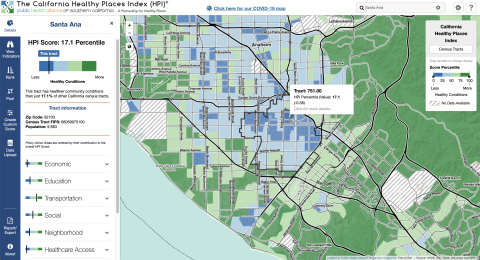This data has been used for assessments, decision making, and planning on a state, regional and local level in California by a wide range of actors, which include:
· California Department of Public Health
· Governor’s Office of Planning and Research
· California Environmental Justice Alliance
· the Hospital Association of Southern California
· County Public Health Departments
· Local/regional healthcare providers
For instance, Kaiser Permanente used the HPI in conducting a community health needs assessments for several areas in southern California (to comply with federal tax law requiring them to conduct a health needs assessment at least once every three years). They used the tool to identify the most under-resourced geographic communities and identify the factors that are most predictive of negative health outcomes.
For this community health assessment, researchers also consulted residents, community leaders, government and public health department representatives through surveys, stakeholder interviews, and focus groups. The assessment identified several health needs that needed to be prioritized: access to healthcare, economic security, mental health, stroke, and suicide. This was used to guide implementation strategies in partnership with community-based organizations, hospitals and groups (e.g. identifying reducing food insecurity as a strategic priority and designing/implementing food benefits programs).
Other reports using the HPI include the Solano County Public Health Departments’ report entitled “Maternal and Child Verification of Cumulative Health Impacts from Social Factors,” the Los Angeles County Department of Public Health city and community health profiles, and the California Environmental Justice Alliance’s SB 1000 Toolkit.

